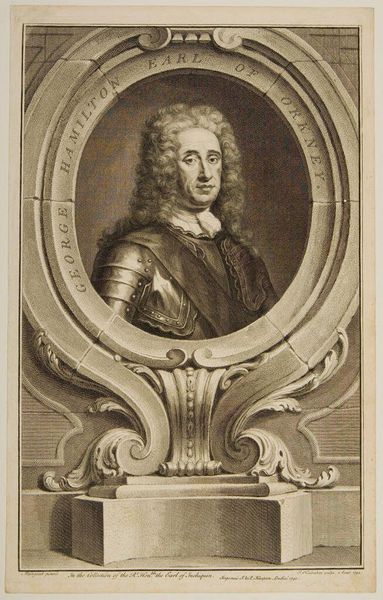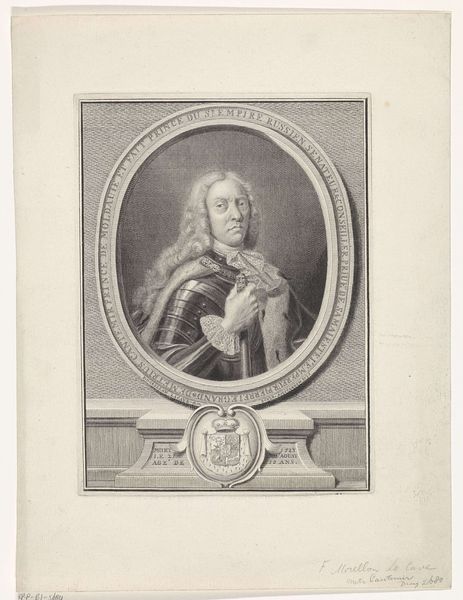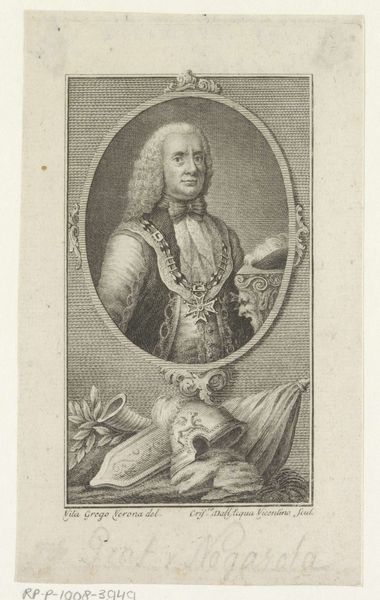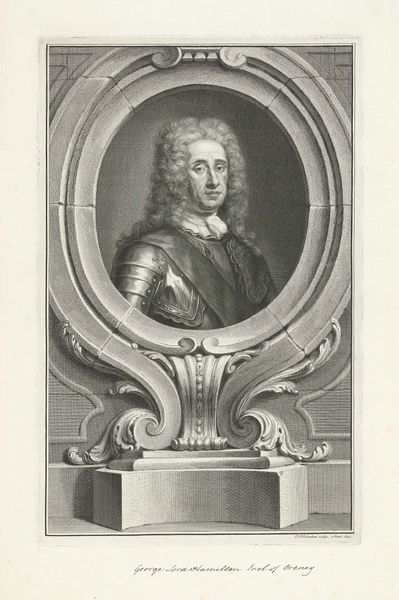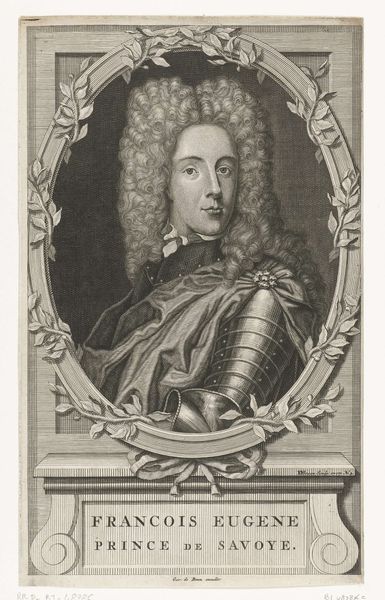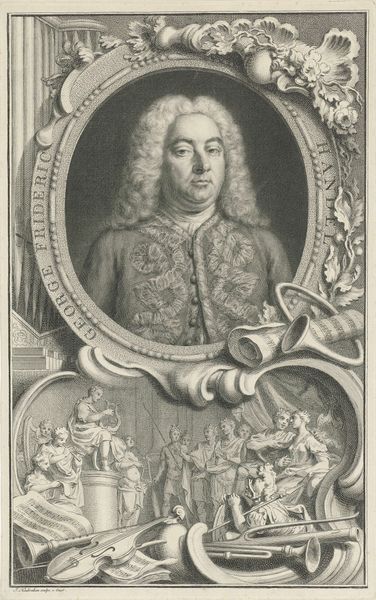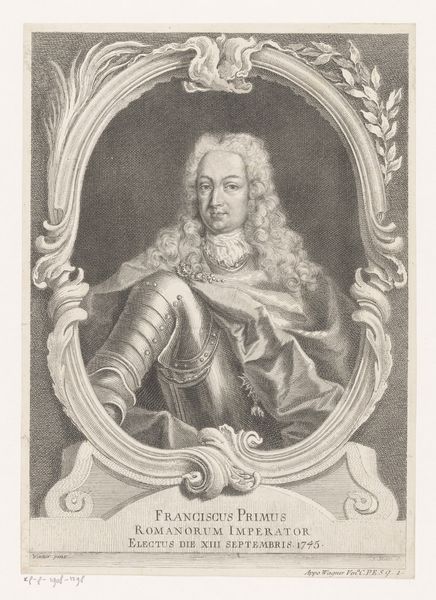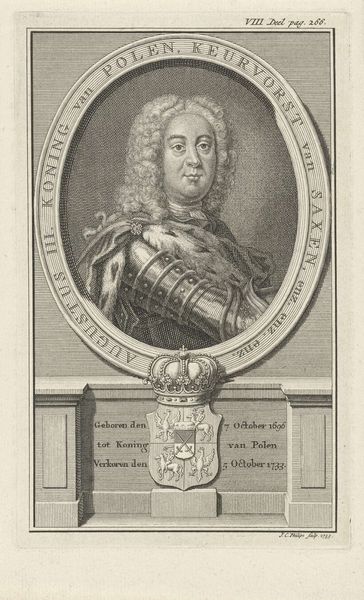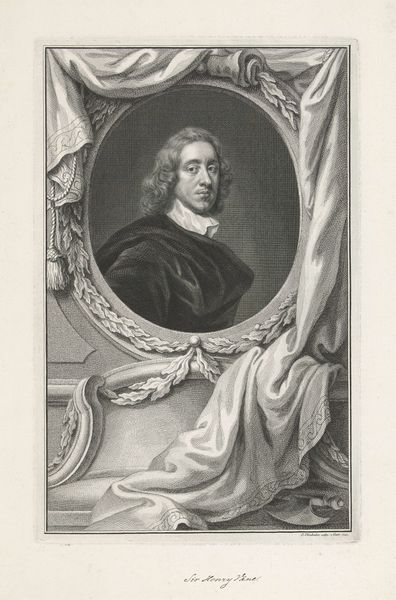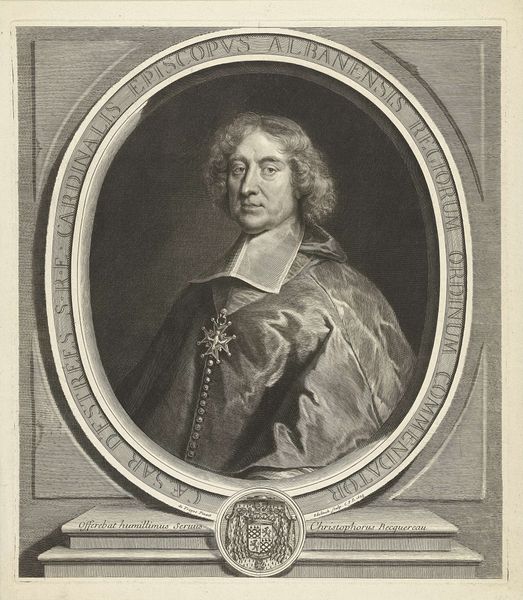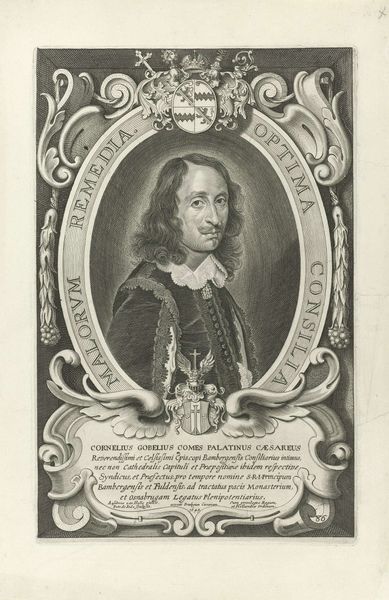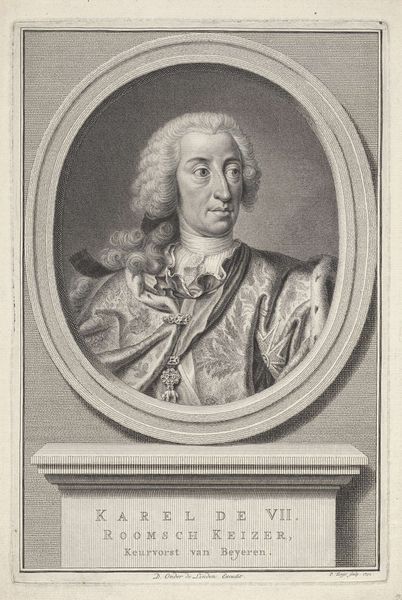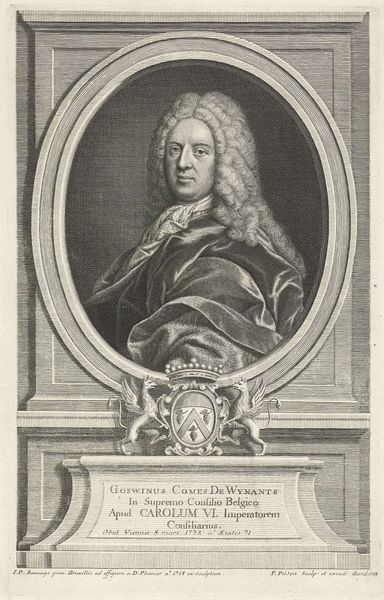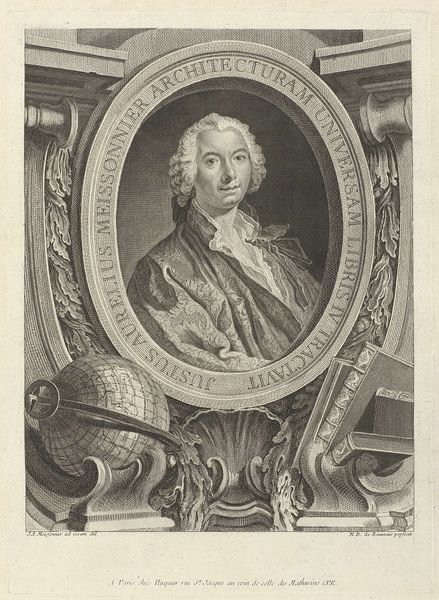
#
pencil drawn
#
aged paper
#
toned paper
#
light pencil work
#
pencil sketch
#
charcoal drawing
#
charcoal art
#
pencil drawing
#
19th century
#
pencil art
Dimensions: height 278 mm, width 190 mm
Copyright: Rijks Museum: Open Domain
Curator: Good morning! Today, we are looking at a striking portrait. It's titled "Portret van militair José Carrillo de Albornoz" by Giovanni Battista Lapi, dating back to 1736. It’s rendered in pencil, offering incredible detail and texture. Editor: Well, my first impression is "formidable," right? He's got that intense stare, all the metal armor and decorations, and even though it's just a pencil sketch, there’s such weight. Curator: Indeed! That sense of authority is deliberate. Consider the elements around him: the laurel wreath, a timeless symbol of victory and honor, frequently associated with military and athletic triumph since ancient Greece. And, of course, his elaborate coat-of-arms below. These are carefully constructed emblems, deeply meaningful in the 18th century. Editor: So much detail! But to me, it is as though we get hints of the person hidden beneath all these carefully chosen items of nobility. What’s your take on the…hmm… the guy underneath all that metal? Curator: That's an interesting question! Certainly, Lapi seems aware of portraying not just a soldier but a specific individual. Even his wig, while fashionable, has a slightly disheveled quality – adding an element of vulnerability beneath the pomp. Think about how symbols and conventions function. They aren't just empty gestures, but carry coded messages about lineage, duty, and cultural values. In this period, even supposed "realism" was thoroughly symbolic. Editor: Makes me think how different portraiture is today. Back then it's all about lineage and showing your…power, really. I wonder what Albornoz himself would think if he saw the selfies we take now. A portrait of our daily-ness. Curator: It is a remarkable point! Our symbols shifted to highlight individuality and casual identity, compared to their symbols designed to build up importance of position. We lost the collective in the individual. But Lapi does so well at combining individual personality with noble regalia here. It reminds us how even within convention, artists can convey a surprising amount of character. Editor: You know, looking at it now, it feels a bit like stagecraft – Albornoz cast in the role of a great leader. The pencil lets Lapi suggest these things lightly… which somehow makes them more persuasive. Curator: It is an intentional display! This dance between person and persona gives portraiture from this era a great deal of power still today. Editor: Well, I am all for questioning power, especially old power, but this one intrigues, right? Thanks for unraveling some of those codes for me. Curator: My pleasure. There's so much to explore!
Comments
No comments
Be the first to comment and join the conversation on the ultimate creative platform.
